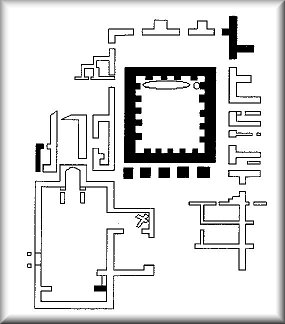
Roman villas
In the second century, the ancient "castros" (small groups of stone buildings where the celts used to live) became Roman villas, during the process of Romanization.
The first villas were built on the "castros", in places protected from the attack of enemies (valleys and high places) but, later, the Romans started to build them in other places too.
The main purpose of the villas was to accommodate the citizens, and to be used as a place of residence. They also had great independence. They had an economical purpose and they were in charge of their own supply. The inhabitants of the villas had a social organization quite advanced. We know it because of the studies carried out about their habits.
Nowadays these villas have fallen into ruins, and they don't fulfill their main purposes anymore. Today they are used as tourist and investigation centres. There are excavations in most of the villages that allow us to know more things about the way that the Romans had to organize themselves.
The villas are very important elements in the study of the Roman way of life. By looking at the structures of the houses and the rests, we can discover things about the way of life and the habits in the history of Rome.
 As in the beginning the villas had been built on the "castros", they kept the same structure. They were inside a wall and in high places. Along the process of Romanization, some villas were built also in other places and at the same time, some "castros" were kept without changes. In that way, the society was divided in people influenced by the Romans and people not influenced by them. The areas with Roman influence became an advanced society with more social prestige. For that reason, the other areas, after some years, also had to accept their influence. The villas were constructed around the "foro" or "main square", where the most important buildings: buildings: termas, templos etc., were. All the streets ran parallel one to the other.
As in the beginning the villas had been built on the "castros", they kept the same structure. They were inside a wall and in high places. Along the process of Romanization, some villas were built also in other places and at the same time, some "castros" were kept without changes. In that way, the society was divided in people influenced by the Romans and people not influenced by them. The areas with Roman influence became an advanced society with more social prestige. For that reason, the other areas, after some years, also had to accept their influence. The villas were constructed around the "foro" or "main square", where the most important buildings: buildings: termas, templos etc., were. All the streets ran parallel one to the other.